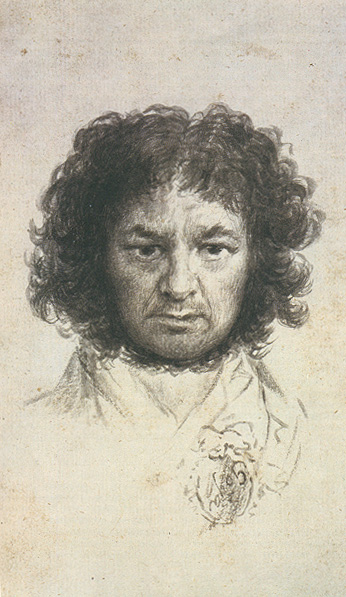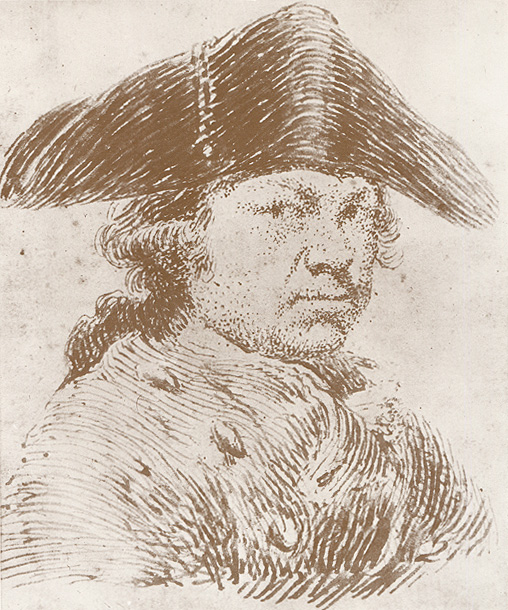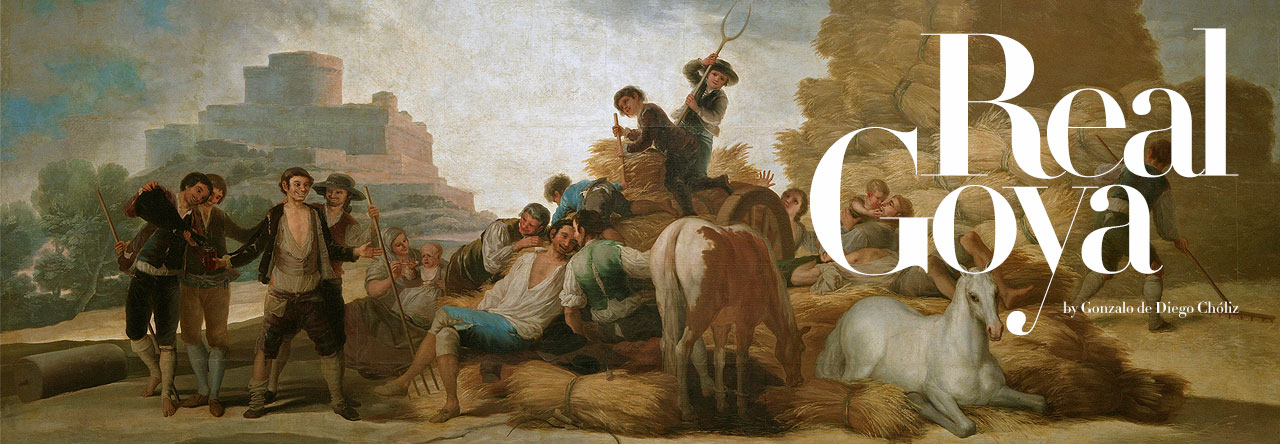It has been written of Goya as modern, precursor of modernity and meaning exponent of the artistic and cultural progress that, on the basis of the so-called Century of Lights, ahead of the 20th century, and the truth is that in the majority of cases either nothing is said actually, or under the bombastic umbrella of modernism, or blindness to see his art, is hidden a rain of words in a real desert of ideas.
It will not be me who using this blog intends to give lessons to anyone and, much less, specialists and scholars that in good faith have tried to illuminate, with their contributions, in a topic poorly and not very well explained by others.
It is true and well known that without Goya the Spanish painting from the 18th, with the Bayeu, Maella, Giaquinto, etc., would have been very little and pretty poor with all this symbolist and academic load that the genius of Goya would break, declaring himself father of what would come later. Educated in the splendid rococo, he met the preludes of romanticism, impressionism and even abstraction, expressionism and surrealism itself. So, we know that with all their grandeur certainly opened the modern art. However, and as the Ambassador of Spain and academic José Antonio Vaca de Osma, writes “all we think we know him, and nor he understands himself”. And in this regard I would like to look at some aspects that can be, in my view at least, as a possibly interesting approaches.
Said Eduardo Schuré (Strasbourg, 1841 – Paris, 1929) that exist in each era geniuses which belong more to a time that still lies ahead than no to the one they live, and that’s why they appear as foreigners opposite to his contemporaries. And that the early influences of their feelings and ideas, immersed in the invisible ocean of intelligence, will flood the world fifty or one hundred years after their death. Shakespeare says that major future events first project on its own shadow before their presence occupies the universe with its advent. They are the forerunners and the rebels.
Those who, like Goya, interrogate themselves with all the harshness and the mixture of disappointment fear of the unknown, depressive sadness and willingness to go forward, that is nearly ubiquitous. We are thus to a great pre-romantic Goya, alone, isolated, genial precursor, and thereafter the first and the source of all others. Because, what could do an intelligent and unbiased man in the Spain of the late 18th and early 19th Centuries?:
“Shut up, work alone, be submitted in the exterior, remain free in their inner selves”.

Autorretrato. Dibujo a la aguada, a tinta china. 233 x 144 mm.
Nueva York, Metropolitan Museum
Goya is a misunderstood and a dissatisfied that also lives permanently in the limit. In the limit of tolerance due to violence of the war, its aftermath, of their terrible bestiality. On the back edge of a very hard post-war period and which come to light all the scourges of a troubled society. In the limit of patience before a few unbearable ruling classes that, drunk of selfishness, ignoring the people and its misfortune. On the edge of his own illness and dissatisfaction… On the edge of fantasy who only see the eyes of the heart. Dissatisfaction is a thirst that does not turn off. It is elusive, as if it had a hole inside, a gap in the soul where escapes the precious, beautiful, good thing that lets him not be happy with anything.
And he lives in an introspective duality which forms the genius of a precursor that, in the last stage of his life, has given the definitive size and opens the Modernity to the world releasing it of sterile impositions. The result of this entire dilemma is not only a work, a vital set that certainly constitute expressions of genuine and deep feelings. All of them. By dissimilar they may seem. And neither are flurry by any kind of conventionality, nor any ritual or any hypocrisy. They are free and reflecting each in the other give rise to a discourse that is possibly the most important, truthful, simultaneous and alternating, and because it is also effectively the last in the time of his long career.
Romantic Goya?
Romanticism is a heavenly grace… or infernal, to whom we owe eternal stigmas.
Indeed yes, Goya is a romantic, as his experience himself a revolutionary reaction against rationalism, in certain aspects of Illustration and especially Classicism, giving more importance to the feeling and breaking with tradition, based on a set of stereotypical rules.
Seen from today, at the beginning of the 21st century, we speak of eternal stigmas and eternal values. And if we analyze with a certain careful Goya and his work we will see with some clarity that in him the stigmas are still signs or symptoms of diseases, in this case moral, like dishonour or bad reputation and others that we shall see below. And values continue to be the qualities that give estimates, such as honesty, loyalty, cultural identity, respect, responsibility, solidarity, tolerance and some more, constituting the foundation of peaceful coexistence. So they are fundamental beliefs that help to prefer, appreciate and choose a few things rather than others, or a behaviour rather than other.

Autorretrato con tricornio Dibujo a pluma y tinta sepia. 403 x 320 mm Colección Robert Lehman. Nueva York
Goya, either in the Caprichos (Whims) as in the Desastres de la Guerra (Disasters of War), talks about moral values, although present or show us the eternal stigmas of humanity. Because Goya also develops and perfects his moral values through personal experience and in his work reflects his interests, feelings and most important beliefs. Cares, a lot, to defend and grow in his dignity. And somehow all that constitutes the prophetic announcement of what will come after.
For the great Leo Moulin (Brussels, 1906-1996) the question is: Is there to save the eternal values? And he answers himself: Our civilization, – the 20th century – daughter of modernity announced by Goya, presents the peculiarity, unique in history, of producing toxins that destroy itself. It contains elements of its own death. It is a society that has bad historical consciousness (colonization, wars, the current systemic crisis…). And besides, the values of our contemporary society are not inert, but autonomous. They evolve in unexpected directions and sometimes dangerous for the social body, thus becoming toxins: freedom becomes anarchy; equality, egalitarianism; science, scientism; the right to happiness, hedonism; the technique, a good in itself; progress, a cruel God that our society happily sacrifices its soul and, sometimes, whole generations, etc.
But a society cannot interrupt its own life, under penalty of death. It may not be continuous and totally put into question, even less than the heart, which cannot stop beating. It is made a transfer of what is fleeting by definition to what by definition must be continuous.
And Moulin concludes affirming that values must be lived as if they were eternal. Hence the radical anticipation of a pre-modern Goya whose emotions are protagonists because they certainly are expressions of genuine and deep feelings. All of them. By dissimilar they may seem. And neither are flurry by any kind of conventionality, nor any ritual or any hypocrisy. They are free and reflecting each in other give rise to a discourse that is possibly the most important speech of his time, accurate, simultaneous and alternating.
Finally, let’s remember once again to Moulin, who says that the European humanism is wary of deviations that will threaten it and that, in fact, threaten our society. To conclude that we all must, at the same time, accept this fact – inherent to our culture – and be attentive and vigilant.
Gonzalo de Diego
